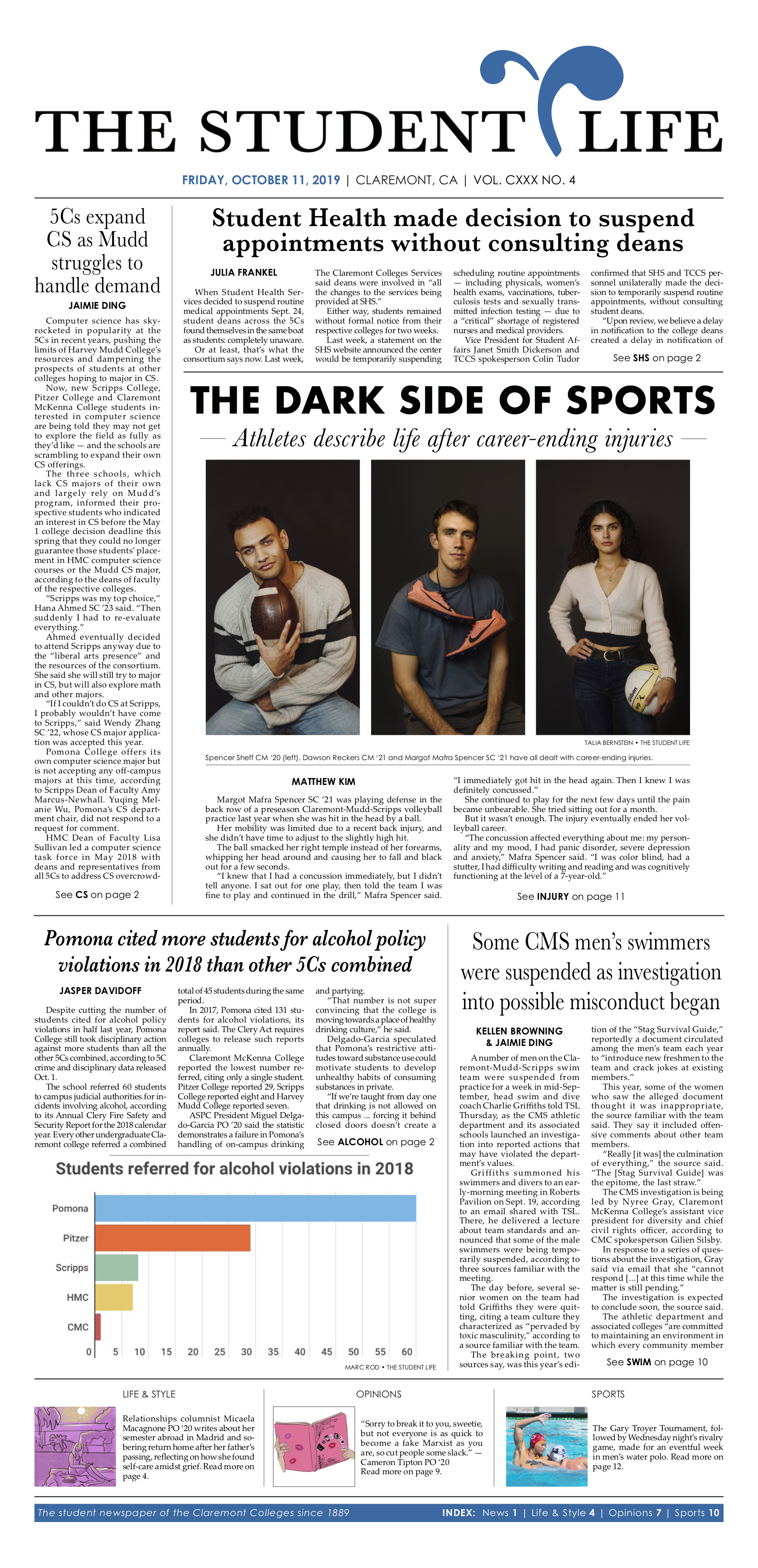

Picking it off the ground
When distributing new issues, we’d often find previous issues still available since so few students were picking up the paper when it was released. We had to consider how most people on our college campuses recieve their news online, and reimagine how the print copy could be valued by students. Rather than simply thinking of the paper as a medium for the stories, it gave us a chance to view the newspaper, itself, as a product. Every week, I’d pose the question: If you saw this paper on the ground, would you pick it up?
(LEFT: Front page before the project; RIGHT: Front page at the end of project.)






